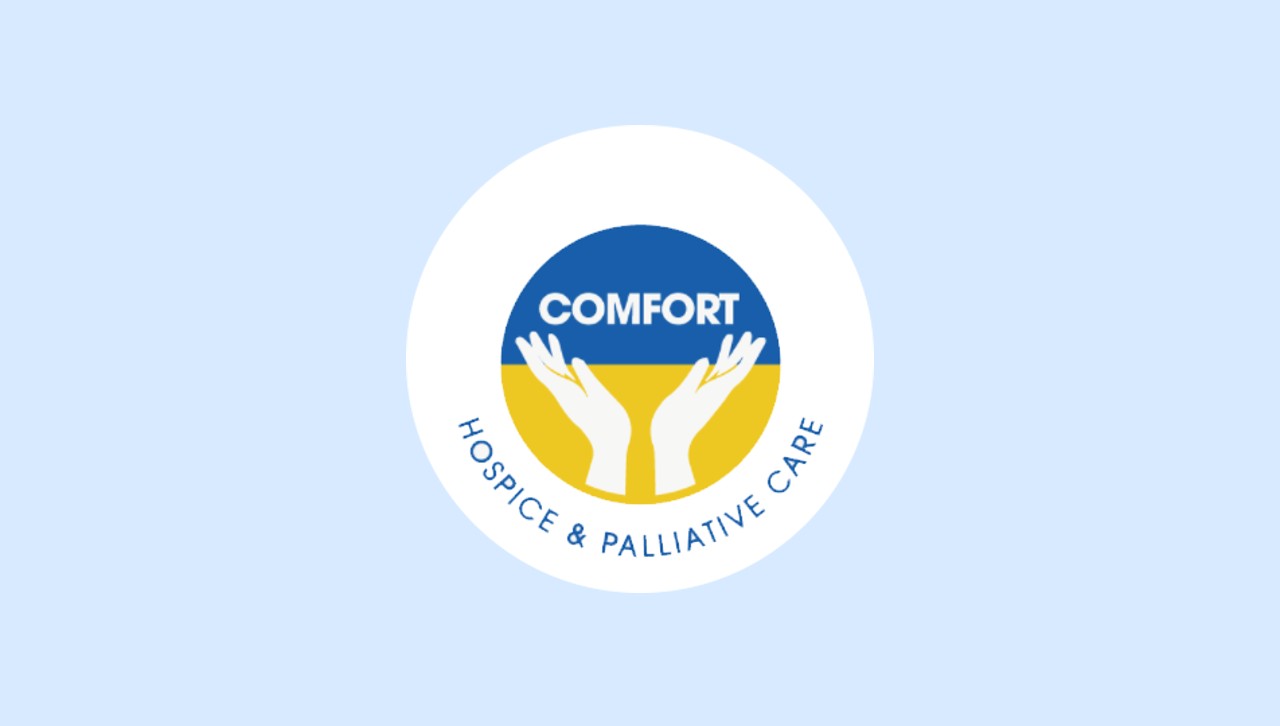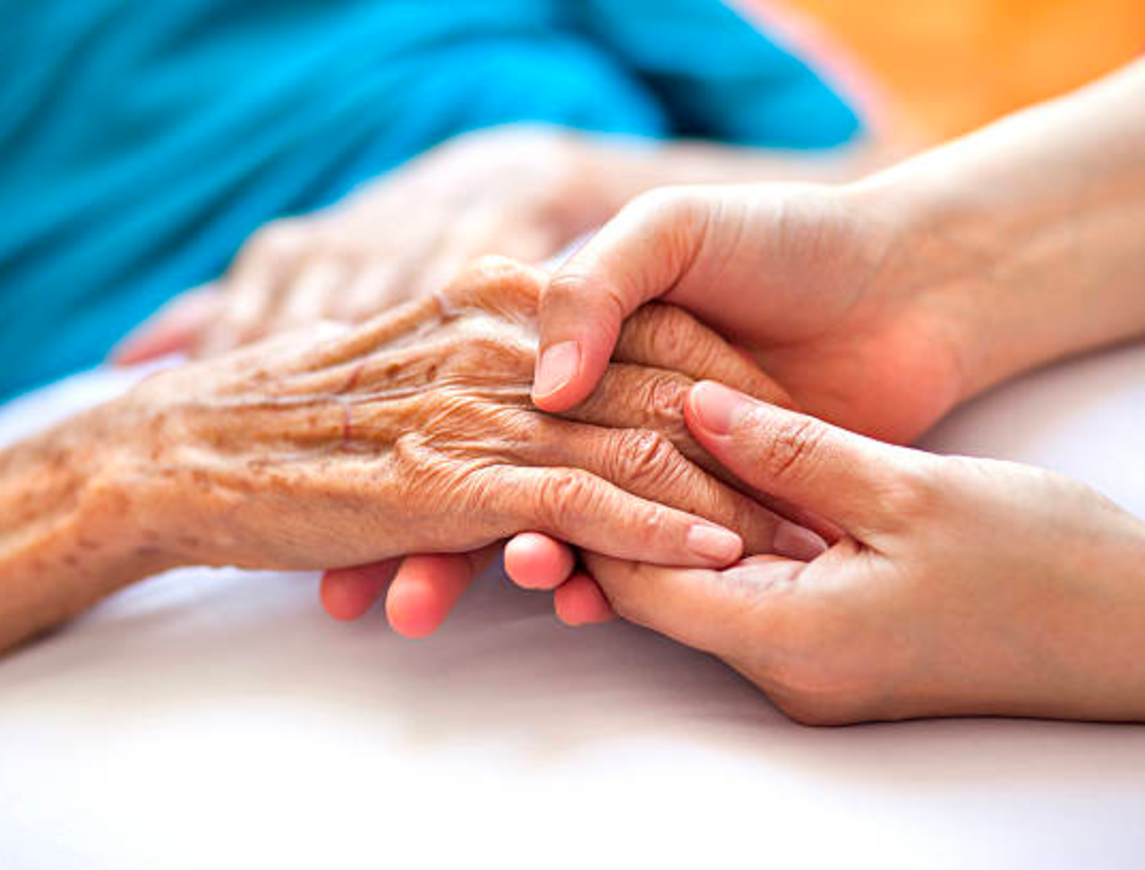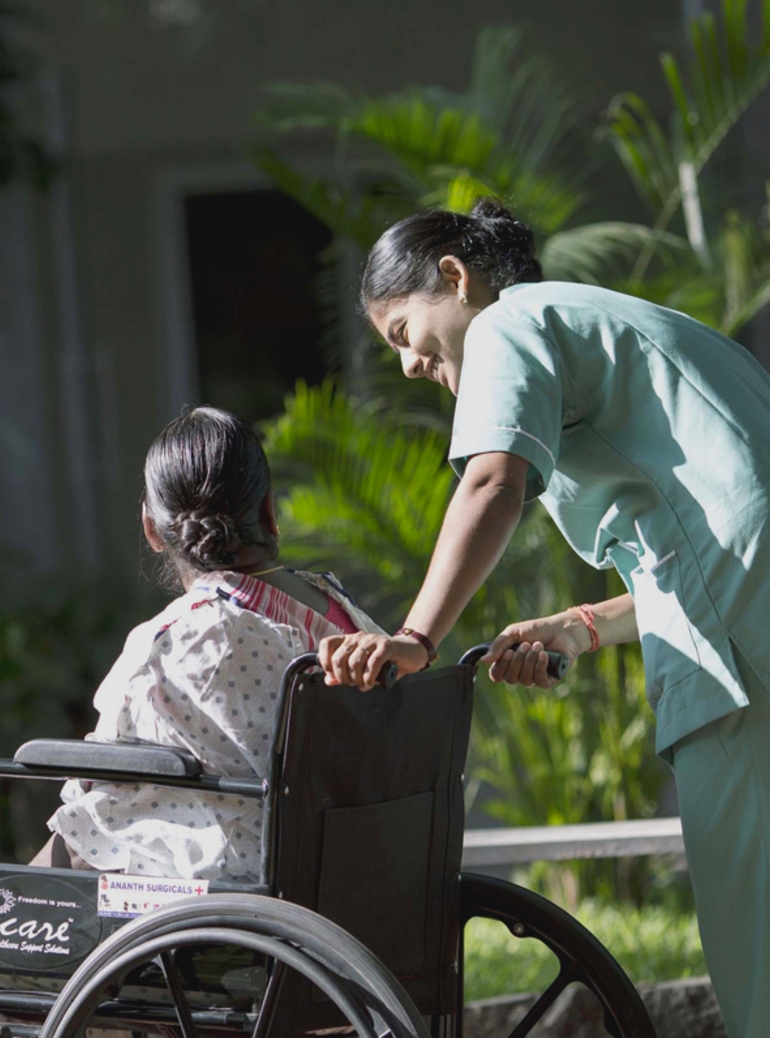 Skip to the content
Skip to the contentCall us for a Private Consultation 1-877-301-3338
As a family member who cares for a terminally-ill patient, preparing for the end of life of a patient can be a difficult task. Comfort Hospice ensures a full encompassing support system to care for patients with life-limiting illness.
Our expertly trained staff works around the clock with family caregivers and clinicians in assisting through this transitionary process.


Here are 10 facts that are necessary in order to understand hospice care
These illnesses include Cancer, Stroke, Kidney Disease, Heart Disease, ALS, AIDS, Multiple Sclerosis and Alzheimer’s Disease.
Depending on where the patient is, hospice care can be provided at their location. Therefore, whether the patient is at home, assisted living community, or an inpatient setting, the patient can be cared under a hospice program.
After a patient is admitted for hospice care, they can opt out of receiving their hospice at any time, no questions asked. In addition, should the patient decide to reinstate hospice care, they can do so, as long as they still meet the requirements for hospice care.
This means continuing the same devices or medications used to treat the patients symptoms. If you are concerned with certain therapies or medications, please contact your physician for further evaluation before enrolling in a hospice care program.
Hospice physicians not only prescribe medications for their patients, they also provide the lowest dose required to treat their symptoms. This means that hospice physicians will find substitute medications that are less aggressive, when possible. Medications can also be covered by Medicare or private insurance.
Since the patient will be at home, the family will take responsibility as the primary caregivers, but aided with support from a hospice team as needed. As the team makes regular visits to check the patient, they also educate and instruct the family caregivers for treatment recommendations.
Although the typical timeframe for hospice is six months or less, hospice care may be extended for the patient. Statistically speaking, hospice has been proven to help patients live longer compared to other hospice eligible patients who do not receive hospice care.
Equipment such as hospital beds, shower chairs, and other supplies, in addition to all medication are provided by the hospice. Most of the time, all of the supplies are delivered directly to the patient’s home and covered by Medicare or private insurance.
Comfort Hospice staff arranges counseling services for patient families who are in need of emotional and spiritual support. Our bereavement support can continue long after the death.
Hospice expenses are usually covered by Medicare, Medicaid, and majority of private insurance plans and covered 100% of all hospice expenses. This includes all visits, supplies, and medications related to the terminal diagnosis.
Like the word hospice, the word morphine can be frightening—until you learn more about it.
“Truly,” says Maite Hernandez, RN, a training director for VITAS Healthcare in Florida, “morphine is a medication that is given even in the acute-care setting in the hospital.”
Morphine is the mainstay of pain relief associated with anything from childbirth to advanced cancer, whether the patient can expect a full recovery or is receiving hospice services.
But patients and caregivers who hear the word “morphine” sometimes fear that their physician has given up, that they or someone they love will be heavily sedated and left to die. And physicians who do not—in the normal course of their practice—routinely prescribe advanced pain medications can be leery of prescribing morphine.
Your doctor can consult with a care physician about pain management, particularly involving cancer care.
Hospice care physicians, however, have both the expertise and experience in opiates to control their patients’ pain quickly using as little medication as possible. They then “titrate,” monitoring each patient’s dosage and symptoms to reach the right level of pain control with the fewest side effects for that patient.
No one at any stage of life should live in pain. Almost all pain can be alleviated with medications. With pain reduced to a tolerable level, the person can eat and sleep, be mentally alert and maintain a level of independence, dignity and self-care. Bottom line: morphine can improve quality of life.
“Opiates,” which can be taken by mouth or intravenously, include morphine, codeine, hydrocodone, oxycodone, hydromorphone, etc. Opiates are derived in nature from opium poppies. “Opioids” are manufactured drugs that have the same effect as the natural opiates. Both kinds of medications are strong, safe and effective painkillers when prescribed and used appropriately.
For hospice patients who have trouble breathing, small amounts of well-controlled and regularly titrated morphine can help ease respiratory distress by decreasing fluid in the lungs and altering how the brain responds to pain. Beyond slowing rapid breathing, morphine also eases the anxiety of struggling to catch one’s breath. Once breathing is controlled, physicians adjust doses regularly based on the type of morphine used, and each patient’s unique tolerance level and specific respiratory symptoms.
A 2019 study by two VITAS respiratory therapists in Chicago (Lukcevic, A., and McCoy, V., published in Symbiosis) found that small amounts of aerosolized morphine can also serve as a “bridge” to easier breathing in a select group of hospice and palliative care patients—most of them diagnosed with lung cancer, severe lunge disease, or respiratory failure linked to other diseases. This delivery method works best for patients who have few remaining options to treat respiratory distress or for whom conventional breathing treatments are no longer effective.
In most patients, small oral dosages of morphine titrated toward relieving respiratory distress is very successful and well-tolerated.
There are some valid concerns about taking morphine that can be addressed quickly and directly:
Sleepiness and lethargy: Morphine can cause some sedation initially, but this effect decreases within a few days. By easing pain and making breathing easier, opiates allow the patient to finally get some much-needed sleep. Once the patient is feeling more comfortable and rested, interest in normal life activities often increases.
Nausea: Nausea may initially occur but tends to wear off after a few days of taking morphine. In the meantime, nausea can be treated with a limited amount of additional medication.
Constipation: Constipation should be expected with morphine and other opiates/opioids, and treated aggressively to ensure patient comfort.
Less effective over time: Tolerance is possible but not often a problem when morphine is used to control pain. It is more likely that the disease has worsened over time, a change that results in increased pain. The hospice physician can increase dosage if and when pain increases. Physicians generally start with low doses of morphine; if the pain increases, the dose can be increased.
Addiction: Addiction is rare (less than 1%) in patients taking morphine for pain. However, it is true that after two weeks or more of taking morphine, it should not be halted abruptly. The body needs to be weaned off opiates so it can adjust, which is normal human physiology and not addiction.
If you or someone you love has a condition that causes acute or chronic pain and over-the-counter drugs like acetaminophen or ibuprofen are not effective, talk to your doctor about prescribing an opiate.
“One of the beautiful things that hospice can do is provide 24-hour care in the home when there’s an acute symptom to manage,” says Maite. “So if a patient is started on morphine because there’s an acute symptom such as pain or respiratory distress, there will be a nurse there to monitor that.”
Having an understanding of hospice care definitions is one way to understand how VITAS can help you or your loved one. This glossary will help to explain some of the common terms and definitions used in hospice care.
Advance care planning—making plans about the care you would want if you could no longer speak for yourself while you are healthy enough to consider options, make choices and discuss with your family; making a living will and naming a healthcare surrogate are part of advance care planning
Advance directive—a document that describes the healthcare you would and would not want if you were seriously ill and unable to speak for yourself
Anticipatory grief—mourning the death of a loved one before that person has died, common when the patient is terminally ill
Bereavement—grief following the death of a loved one
Care transition—a change in a patient’s care, from hospital to home, for example, or from one team of doctors to another, or from curative care to hospice care. Transitions are difficult for the patient and require planning, communication and careful monitoring
Caregiver burnout—depression, exhaustion, anger, etc., that stems from feeling alone and unsupported as you care for a loved one
Case management—the professional coordination of services to benefit a client; in healthcare facilities, case managers (or case workers) coordinate services for patients transitioning from hospital to other care settings
Chaplain—a clergy or lay person employed by a secular organization: a college, military branch, prison, hospice or hospital, police or fire department, etc. A chaplain ministers to those of any religious belief, and of no religious belief
Continuous care—one of the four levels of care mandated by the Medicare hospice benefit; up to 24 hours/day of clinical care in the home until symptoms are under control
Culturally competent care—the ability to tailor healthcare to meet patients’ diverse values, beliefs, and social, cultural and language needs
Curative care—treatments intended to cure a disease
Diagnosis—determination of the disease or condition that explains a person’s symptoms
DNR—a do not resuscitate (DNR) order is written by a physician at the request of a terminally ill patient and placed in the patient’s records. It instructs medical staff not to revive the patient if their breathing or heartbeat stops
Dysphagia—difficulty swallowing
Dyspnea—difficult or labored breathing
Edema—an excess of fluid in body cavities or beneath the skin. It causes swelling and is very painful
Election of hospice—choosing to be admitted to hospice and signing the necessary paperwork
End-of-life care—see hospice care
Family caregiver—anyone who provides physical and/or emotional care to an ill or disabled loved one at home
Four levels of care—the Medicare hospice benefit mandates that a hospice offer four levels of care to qualify for Medicare reimbursement. Those levels are: routine home care, continuous care, inpatient care and respite care
Free-standing hospice—see hospice house
GIP—general inpatient (GIP) care, one of the four levels of care mandated by the Medicare hospice benefit; if symptoms are too severe to be managed at home, a hospice patient is cared for in a general inpatient (GIP) bed in a healthcare facility until symptoms are under control
Grief—deep sadness experienced after the death of someone you love
Holistic services—special treatments (music therapy, massage, pet visits, reiki, acupuncture) that address the whole patient, not just the disease
Home hospice care—see routine home care
Home medical equipment—supplies and equipment (hospital bed, wheelchair, patient lift equipment, oxygen and its delivery systems, bedside commode) that support the unique needs of a patient at home
Homelike setting—a healthcare setting, as in a hospital or nursing home, that emphasizes art on the walls, colorful comforters on the beds and curtains at the windows, for example, rather than the clinical equipment, functionality and sterility of a typical hospital room
Hospice—a healthcare organization whose patients are terminally ill, and which focuses on comfort and quality of life rather than on curing the terminal disease
Hospice aide—a certified nursing assistant who provides personal or “custodial” care (help with eating, bathing, dressing, moving around, using the bathroom) near the end of life
Hospice care team—professional caregivers (RN, physician, social worker, chaplain, hospice aide, bereavement specialist and volunteer) who work together to care for the whole patient near the end of life. See IDT
Hospice care—comfort care (as opposed to curative care) that manages pain and symptoms so someone with a terminal illness can live each day to the fullest
Hospice eligibility—guidelines that determine if a patient qualifies for the Medicare hospice benefit; two physicians must certify that the patient has fewer than six months to live if the disease follows its usual course
Hospice house—a building, usually freestanding, that is designated for the care of patients near the end of life and their families. See inpatient unit
Hospice volunteers—members of the community who donate their time and energy to perform tasks for a hospice, from visiting a patient to doing clerical work in the office. Medicare mandates that 5 percent of patient care must be performed by a local volunteer; hospice companies recruit volunteers and provide free training
IDT—see interdisciplinary team
Inpatient care—one of the four levels of care mandated by the Medicare hospice benefit; around-the-clock care provided in a healthcare facility when the patient’s symptoms cannot be managed at home. The goal is to stabilize the patient so they can return to routine home care
Inpatient unit—an area of a healthcare facility, often a floor or wing, dedicated exclusively to the care of patients near the end of life and their families. See hospice house.
Interdisciplinary team— a group of professional caregivers with different specialties (social work, spirituality, medical, personal) who work together to care for the whole patient
LGBTQ—an acronym for people who are lesbian, gay, bi-sexual, transsexual or queer/questioning
Living will—a document that specifies what kind of medical treatment you would want if you had a terminal illness. It is called a “living” will because it directs what will happen to you while you are alive
Medicare hospice benefit—since 1982, Medicare has provided free medical and psycho-social services to anyone who has a doctor’s order stating they have six months or less to live if their disease runs its expected course
POC—plan of care; a document created by your hospice team that lists the services you need, the team member who will provide them, how often and what results are expected
Power of attorney (POA) for healthcare—a document that identifies who will make healthcare decisions for you if you are unable to speak for yourself due to illness, injury or debilitation
Primary care physician—(PCP) the personal physician who cares for you and refers you to specialists as necessary
PRN—the direction to take a medication as it is needed
Prognosis—the likely course of a disease or illness
Recertification—a document that states that a patient who is receiving hospice services continues to be eligible beyond the allotted time of the last certification
Referral—the suggestion that a certain patient might be hospice eligible, usually made by a healthcare professional. It can begin an evaluation and discussion that ends in admission to hospice
Respite care—one of the four levels of care mandated by the Medicare hospice benefit; caring for a home care hospice patient in an inpatient facility to provide up to five days of respite to the family caregiver
Routine home care—one of the four levels of care mandated by the Medicare hospice benefit; basic hospice services brought to the patient wherever they live
Terminally ill—having a disease or illness that cannot be cured, and that is expected to result in death in a short time
Veterans benefits—advantages or payments available to military veterans through the US government
In hospice, symptoms are often treated with medication or clinical therapies, but holistic therapies are often used to bring a higher quality of life to patients and enhance patient-centered care.
From pet visits and massage, to aromatherapy and Reiki, VITAS provides these specialized services to elevate our patients’ hospice experience.
In Japanese, the word “Rei” means universal life and the word “Ki” means energy. Reiki therapy is based on the idea that all life has an energy field that flows through and around it. When this energy is low, a person can feel unwell or depressed. Reiki therapy improves the flow of energy to create feelings of peace, security and well-being.
The National Institutes of Health classifies Reiki as a biofield therapy. A biofield is the invisible energy field, often called an aura, which surrounds each of us to a depth of several inches. Reiki practitioners place their hands on or above the body within this biofield to increase energy flow.
Reiki promotes:
Reiki is especially beneficial to terminally ill patients and their caregivers. For patients whose skin may be too fragile or sensitive to touch, Reiki is a gentle therapy. Caregivers overwhelmed by the burden of care and those suffering from anticipatory grief can use Reiki to experience a deep calming of the body, mind and spirit.
There’s no doubt that smell has a powerful effect on the brain. Stimulating the sense of smell can also cause immediate physiological changes in blood pressure, muscle tension, blood flow to the skin and more.
In studies done by the National Cancer Institute, aromatherapy for therapeutic use by critically ill patients helped improve their physical, emotional and spiritual well-being. Aromatherapy involves using essential oils—the volatile liquids extracted from plants—to impact the brain’s limbic system and its pathways to the emotions. When inhaled, these essential oils have been shown to have anti-inflammatory, anti-bacterial and analgesic effects.²
In a hospice setting, aromatherapy can:
Essential oils can be blended into lotions and creams and used to massage the body, hands and feet. They can be added to bed baths, placed in a diffuser, or applied to a cotton ball for inhalation by the patient.
It is a recognized method of tapping our emotional connection to achieve therapeutic goals. For hospice patients, it can reduce and replace feelings of fear and anxiety with a sense of peace and positive well-being. Caregivers can benefit from massage therapy as well. For both patients and their caregivers, benefits include:
Acupuncture is an ancient Chinese practice based on the concept that interruptions in the flow of energy (chi) in the body can lead to pain and disease. Restoring proper flow of energy can reduce pain and improve quality of life.
Acupuncture acts directly on the central nervous system. Thin needles are inserted in strategic points along energy pathways. Research has found the practice stimulates the release of endorphins—the body’s natural opiates—and encourages the adrenal glands to release chemicals that modify the perception of pain. The tiny needles cause very little discomfort, the treatment is relaxing and safe, and no medications or chemicals are involved.
The benefits of acupuncture to hospice patients include:
If you or a loved one is a VITAS patient or caregiver and would be interested in using one of these holistic therapies, please ask a member of your team about its availability.
The answers to these hospice myths are no, no and no.These are the facts:
The following questions may help guide you in understanding if hospice care is appropriate:
Does the patient have any of the following life-limiting diseases?
The following are common conditions associated with hospice care:
Many other conditions are also common, please contact us to find out if hospice care is the right plan for you.
In addition, observing if the patient is demonstrating any signs of deterioration is also helpful. Signs include body weight loss, excessive hospitalization or emergency room visits, decline in physical activity and/or mental alertness.
Lastly, speaking with the patient to understand what they have requested can be helpful. In the case of access to supporting documents, such as a living will, the patient may have made it clear their desires to either receive interventions not. The hospice staff work with the patient to devise a plan to honor the patient’s wishes and desires, while improving the quality of time that remains.


Hospice is a method to care and treat people who are terminally ill by utilizing paint relief and symptom management.
When the patient can no longer receive curative care, it may be time to consider using hospice. Usually a physician will determine the life expectancy of the patient. If they conclude an expectancy of six months or less, calling a hospice may help in adding comfort and solace.
A free hospice evaluation is provided upon request. At times, a physician or clinician may refer in addition to other options so that family can decide the best path moving forward.
The hospice will schedule a time to sit and discuss with the family, providing an overview of the care options and answering any questions. An admissions nurse will review the patients diagnosis and evaluate the patient, in addition to answering any questions from family members. A treatment plan is then prepared and presented to the family.
If the family decides to proceed with hospice care, the required admission paperwork is provided for review and once signed, the hospice staff begins to schedule visits and start the treatment.
Hospice care is fully covered by Medicare, Medicaid, and most major private insurances. There are no out of pocket expenses when qualified within programs. For those who are ineligible to receive medicaid or do not have private insurance, there are many assistance programs to cover costs.
Please call the Comfort Financial Staff to help answer any financial related concerns at 818-296-8586
The hospice nurse will work with the family and patient in deterring the level of treatment required, and will create a schedule that works. This will determine how often staff members will visit, and how the duration of each visit.
Nearly everything is managed and provided from the hospice team. This includes equipment, such as beds and shower seats, in addition to all medication required for symptom relief, which is delivered directly to where the patient lives. All that is required from the family is to work closely with the team in informing on updates about the patients health info, and activities. As the family will generally be the primary care givers, it is important that they work closely with the hospice staff as a team.

We proudly service all through out major
counties of southern California
We help make the end of life process easy by providing care, treatment, and 24/7 support so that you can focus on the things that matter.
Use our interactive tool to see which service option is best for you.
Prefer to speak with someone instead?
Please call us: 818 296 8586
Use our interactive tool to see which service option is best for you.
Prefer to speak with someone instead?
Please call us: 818 296 8586
Use our interactive tool to see which service option is best for you.
Prefer to speak with someone instead?
Please call us: 818 296 8586
Use our interactive tool to see which service option is best for you.
Prefer to speak with someone instead?
Please call us: 818 296 8586
Use our interactive tool to see which service option is best for you.
Prefer to speak with someone instead?
Please call us: 818 296 8586
Use our interactive tool to see which service option is best for you.
Prefer to speak with someone instead?
Please call us: 818 296 8586
Use our interactive tool to see which service option is best for you.
Prefer to speak with someone instead?
Please call us: 818 296 8586
Use our interactive tool to see which service option is best for you.
Prefer to speak with someone instead?
Please call us: 818 296 8586
Set an appointment and an expert nurse will visit you to discuss possible options for Hospice treatment.
Prefer to speak with someone instead?
Please call us: 818 296 8586
